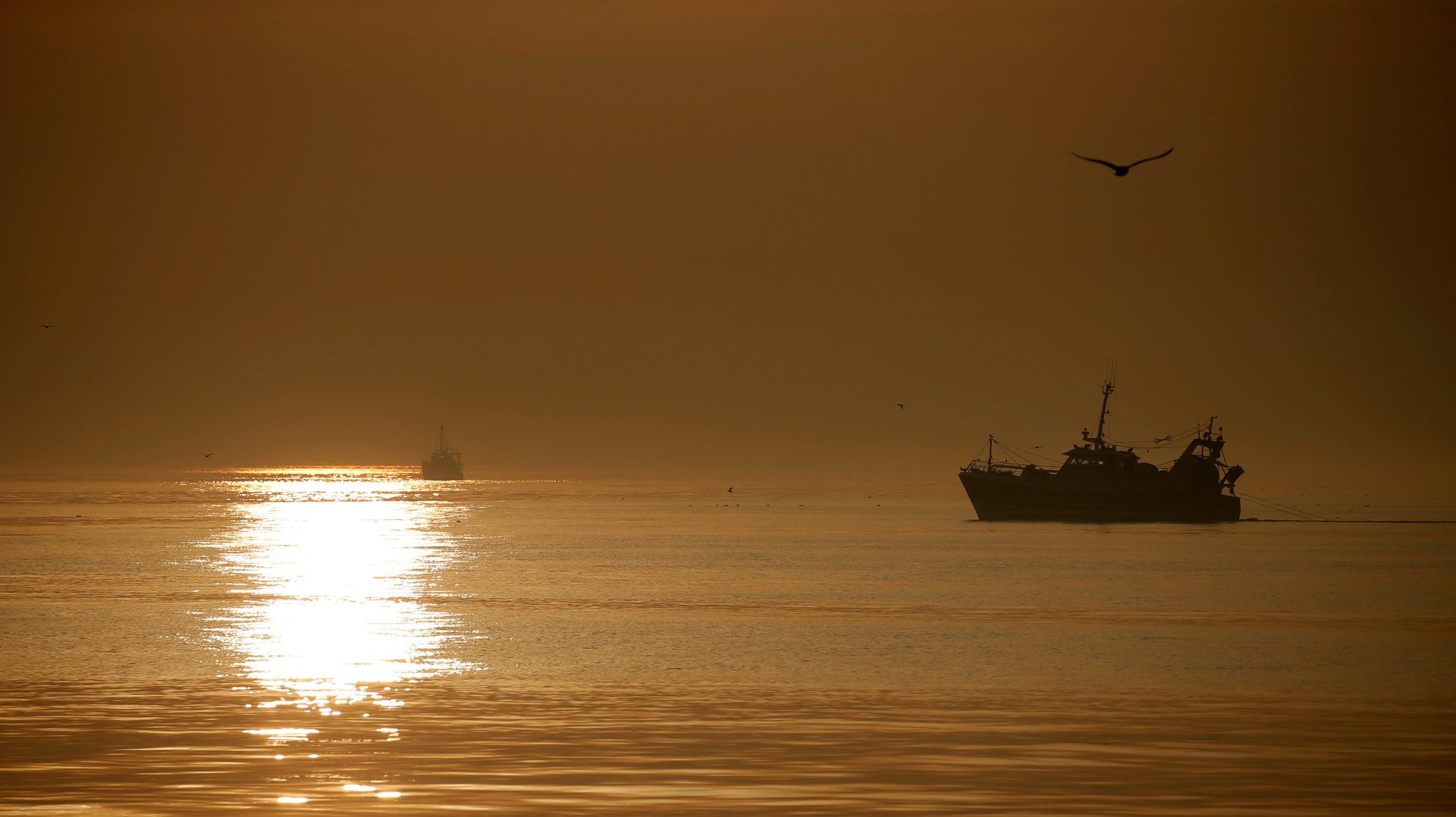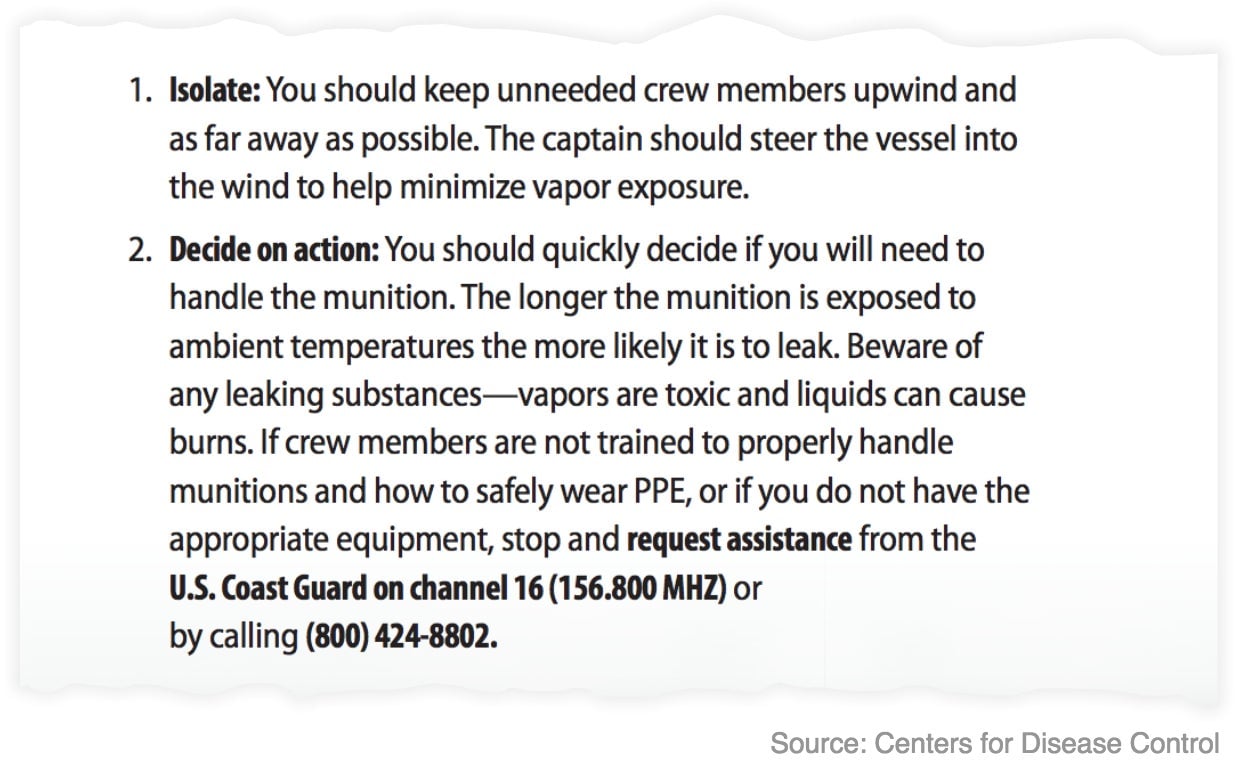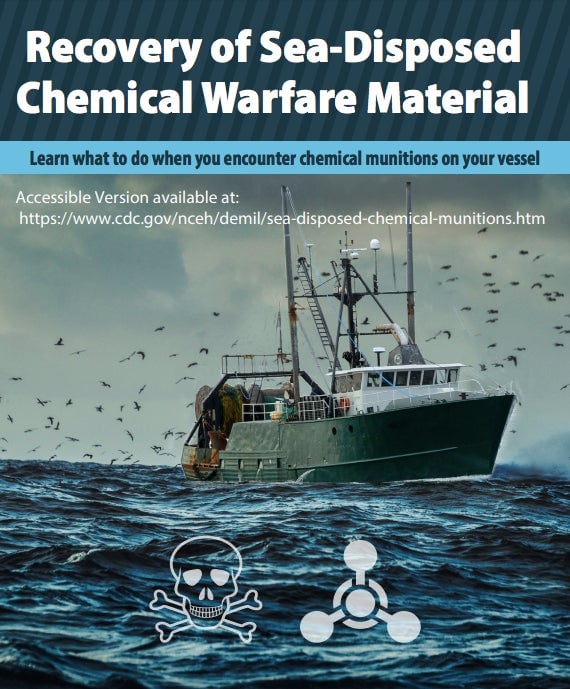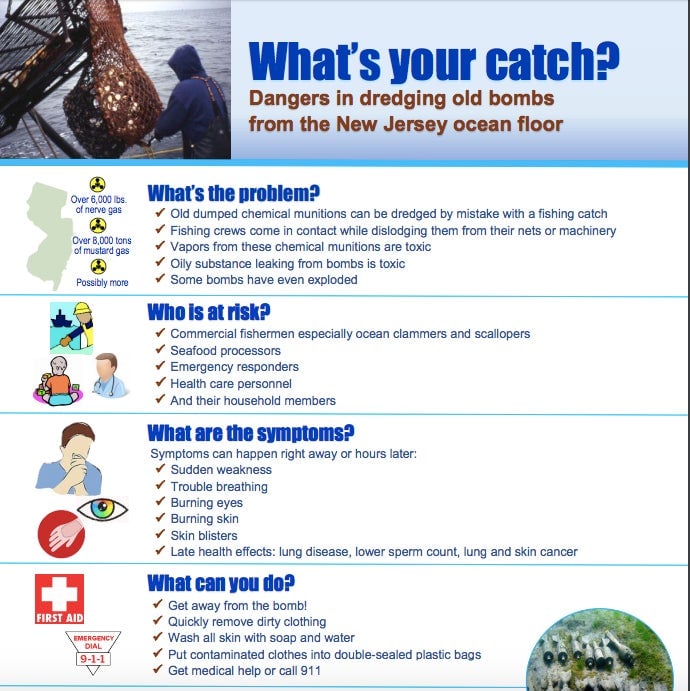Going fishing? Watch out for chemical weapons
The US Army will destroy stockpiles of mustard gas and nerve agents this summer as part of its commitment to a 1997 treaty banning the production and use of chemical weapons. The undertaking will require specialized personnel—toxic-materials handlers, chemical-accountability managers, surety specialists, ammunition surveillance/quality assurance specialists, and a coterie of supervisors.


The US Army will destroy stockpiles of mustard gas and nerve agents this summer as part of its commitment to a 1997 treaty banning the production and use of chemical weapons. The undertaking will require specialized personnel—toxic-materials handlers, chemical-accountability managers, surety specialists, ammunition surveillance/quality assurance specialists, and a coterie of supervisors.
In the decades immediately following World War II, America’s military wasn’t quite so buttoned up about its chemical cast-offs. Until Congress outlawed dumping of munitions at sea in 1972, there were an estimated 74 offshore chemical weapons disposals through 1970, 32 of which took place in US waters and 42 abroad.
Oceanographers at Texas A&M University have estimated that at least 31 million pounds of munitions of all types were dumped in waters off 16 states and in the Gulf of Mexico, although “that could be a very conservative estimate.”
The problem is not limited to US waters. Sections of the Baltic and North Seas are known to contain large numbers of abandoned chemical weapons, and such munitions have turned up off the coasts of France, Sweden, and Germany.
The CDC warns of the risks
Pulling up an old chemical weapon as part of a shellfish haul is not a especially uncommon occurrence, particularly anywhere in the vicinity of a domestic military installation that was operating during WWII, says retired US Coast Guard commander Stephen Flynn.
“The combination of mobilizing and waging a world war and the lack of concern in those days for the environment generally, and the marine environment specifically, meant that there were accidents and sometimes dumping of materials that are still sitting on the bottom of harbors and near shore where local dredges operate,” Flynn, now a professor at Northeastern University, tells Quartz.
It’s enough of an issue that the US Centers for Disease Control maintains a dedicated webpage advising commercial fishing boats on proper weapons-handling procedures: “Crew who perform jobs where catch or other items are brought up from the ocean should be trained on how to recognize munitions, properly handle munition, safely put on and remove personal protective equipment (PPE), decontaminate potentially contaminated surfaces, and recognize signs and symptoms of exposure.”

Commercial clammers
For the past 15 years, the CDC has been keeping track of chemical munitions landed by fishing crews at sea. The most common seems to be mustard gas, a blister agent that causes severe burns and damages bone-marrow cells as well as the overall nervous system.
- In 2004, a fishing vessel dredging for clams off Delaware hauled up a rusted artillery shell containing mustard gas and leaking black liquid. A US Air Force bomb-disposal technician later suffered severe chemical burns after handling the bomb; 15 more incidents involving mustard gas have been recorded in Delaware since.
- In 2010, clammers off Long Island, NY discovered a number of chemical munitions in their catch and tried to dump them back in the water. One landed on the boat’s deck, oozing black liquid. Two crew members were hospitalized with symptoms consistent with mustard-gas exposure.
- In 2012, a 75mm projectile containing mustard gas was dredged up by a clam boat in Delaware; the crew told investigators they often come across munitions that “smell like garlic,” which is how the odor of mustard gas is described.
- In 2016, a mustard munition found by an ocean clammer sorting through his catch burned skin on his shoulder and arms. By the time he got to the hospital 36 hours later, the clams had already been processed into chowder. Nearly 700 cases of soup were subsequently impounded by the Delaware Department of Natural Resources and Environmental Control.
- A 2017 incident reported by the US Coast Guard involved “fishing vessel crew members being exposed to CA (chemical agents) as a result of the incidental handling of DMM (discarded military munitions).” Crew members suffered chemical burns caused by what was “presumed to be a sulfur mustard agent.”

More than 6,000 pounds of nerve gas and more than 8,000 pounds of mustard gas remain submerged off New Jersey alone, according to the state’s department of health:

Although the weapons containing it have deteriorated, mustard gas can remain highly toxic for many years.
However, experts don’t believe they provide any opportunity for use by terrorists. As one told the Associated Press in 2010, “If I’m a terrorist and I want to use chemical weapons, I can go to 16 hardware stores and get the stuff I need to make it, rather than be trolling around in the middle of the ocean.”